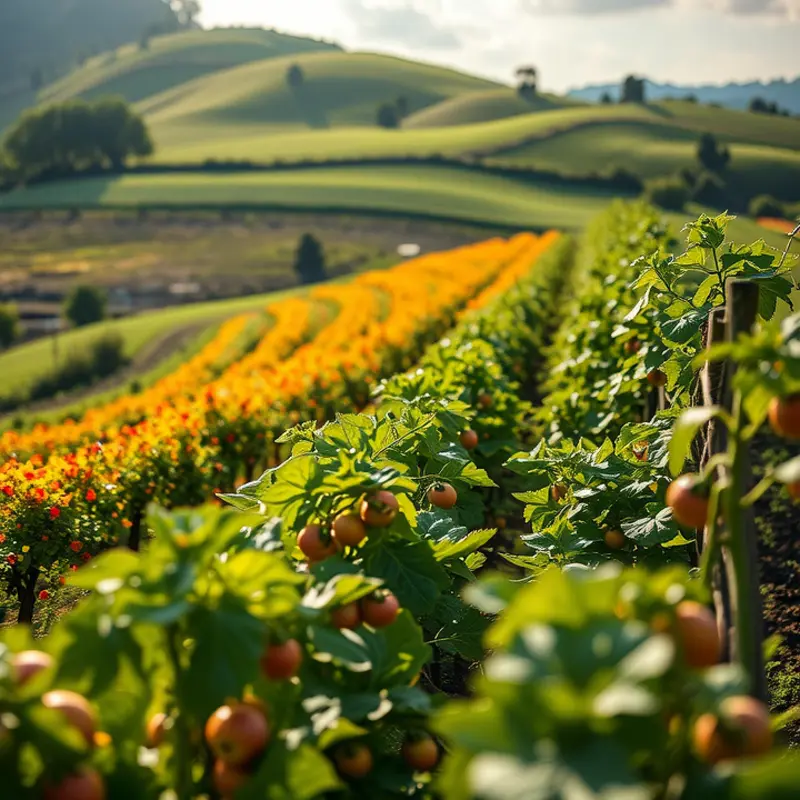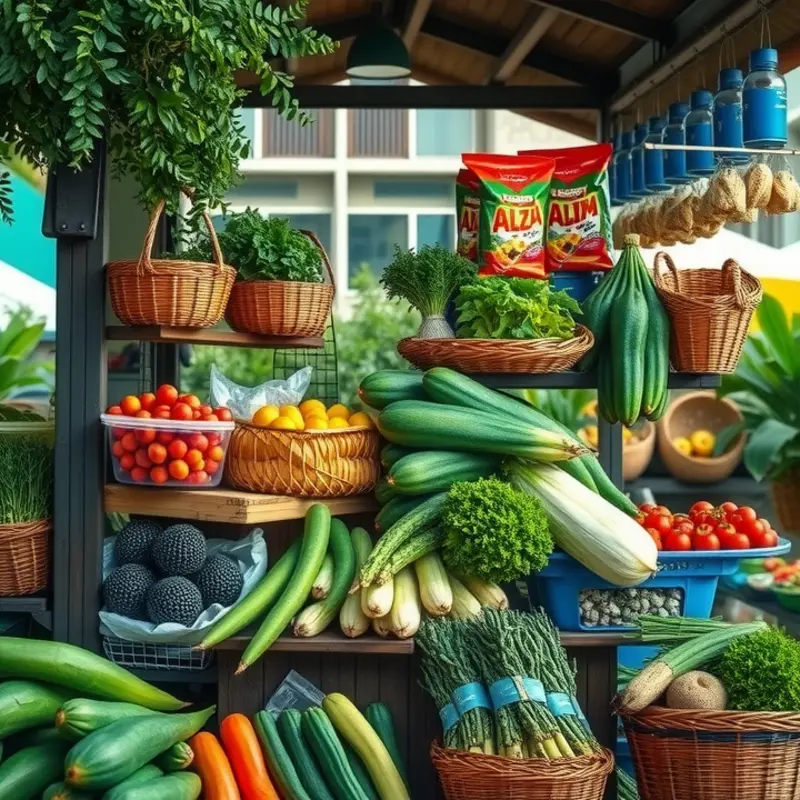Savoring flavor doesn’t have to come at the expense of our environment. Eco-friendly flavorings are not just a trend; they represent a shift towards sustainable living without sacrificing taste. With a wealth of natural options available, individuals can make informed choices that benefit their health and the planet. By embracing organic and locally sourced flavorings, we can create a culinary palette that aligns with our environmental values. Join us on this journey to explore the world of sustainable flavoring options.
Embracing Organic Flavorings

Exploring organic flavorings opens up a world of possibilities for taste and sustainability. These flavorings are derived from ingredients that are grown without synthetic pesticides, herbicides, or genetically modified organisms. By choosing organic, we support farming practices that work with nature, rather than against it. This incredibly significant choice contributes to healthier ecosystems and reduces pollution, which in turn minimizes our carbon footprint.
One standout benefit of organic flavorings is their purity. Free from chemical residues, these flavorings maintain the true essence of their source. This enhances your culinary experience, allowing the natural flavors to shine. Organic herbs, spices, and extracts provide a cleaner and more authentic taste compared to conventional counterparts. Imagine the depth of a basil leaf’s flavor, or the aroma of a vanilla extract undisturbed by additives—these nuances enrich our meals.
Sustainability is central to the organic philosophy. Organic farming emphasizes soil health through crop rotation, composting, and other regenerative practices. These methods enrich the soil, promoting biodiversity and strengthening natural pest control. When farmers prioritize soil health, they create resilient landscapes that sequester carbon and withstand climate challenges. Consequently, using organic flavorings is not only about taste, but participating in a movement that fights climate change.
Purchasing organic products also supports fairer economic practices. Certified organic products often come from smaller-scale farmers who are committed to environmentally friendly production. By choosing organic flavorings, you contribute to fair trade, ensuring that producers receive fair compensation and can continue sustainable methods. This economic sustainability is crucial for long-term global change.
To incorporate organic flavorings into your home, consider starting with commonly used spices and herbs. Organic oregano, rosemary, and thyme can elevate everyday dishes with striking flavor profiles. Vanilla, cinnamon, and turmeric are also fantastic choices that provide distinct flavors while supporting health. These staple ingredients can be part of every meal without compromising nutrition or sustainability goals.
For those new to organic options, integrating them can be straightforward. Begin by substituting organic versions of go-to flavor enhancers like garlic powder or chili flakes in your favorite recipes. Keep in mind that the flavor intensity might differ, requiring slight adjustments to quantities. You might also explore fresh organic herbs when possible, as they often surpass dried versions in vibrancy and taste.
Proper storage of organic ingredients is essential to maximize their shelf life and efficacy. Consider exploring resources on eco-smart kitchen storage for tips on maintaining freshness and minimizing waste. Effective storage not only conserves the precious flavors but also aligns with sustainable living principles by reducing food waste.
Incorporating organic flavorings into your cooking habits is a powerful step towards holistic sustainability. It uplifts the quality of your meals while offering ethical and environmental benefits. By choosing organic, you become part of a larger community committed to preserving the planet through conscious culinary choices.
Local vs. Imported: The Flavor Impact

The journey from field to fork presents crucial choices, notably in sourcing flavorings locally or importing them. Opting for local flavorings not only brings geographical authenticity to your dish but also offers a sustainable advantage by supporting small-scale farmers. According to research, transportation in the food supply chain constitutes a significant portion of carbon emissions. By reducing transit miles, local flavorings help cut down the carbon footprint inherently linked to food globalization.
The environmental benefits are clear, yet the nuances between local and imported options go beyond mileage. Local flavorings often reflect a region’s terroir—a concept originally linked to wine but applicable to other flavors, too. This terroir infuses a unique taste profile that standardized imported products may lack. For instance, locally cultivated vanilla might present subtle differences in aroma and depth due to soil variation and climate, impacts that can be lost in mass-produced imports.
Furthermore, supporting local agricultural communities by choosing local flavorings can drive economic resilience. Small farms often employ traditional practices and emphasize biodiversity, both vital for ecosystem sustainability. In some regions, these practices extend to flavorings such as local herbs and spices. By choosing these, consumers contribute to the survival of agricultural traditions and heritage crops that enhance biodiversity.
However, not all imported flavorings are less sustainable. For some exotic spices and herbs native to distant lands, sustainable sourcing models ensure fair trade and responsible farming practices. These measures can mitigate the carbon impact while supporting global communities reliant on spice exports.
Beyond the logistical and ethical considerations, the choice between local and imported flavorings affects culinary results. Local flavors can provide a fresher and more vibrant taste, often harvested closer to peak ripeness. In contrast, imported flavorings may rely on preservation methods that can subtly alter their quality.
For home cooks and professional chefs alike, integrating local flavorings can be a practice in mindfulness. It fosters creativity through seasonal cooking—adjusting menus based on the local availability of herbs and spices. This practice not only entrenches sustainability in everyday cooking but also enriches the palate with a diverse tasting experience.
Exploring flavoring alternatives to reduce sodium, like certain local herbs, could enhance this practice further. Interested readers may explore more on this topic in our guide on Flavor Boosters Without Salt.
Ultimately, the choice between local and imported flavorings should hinge on balance and conscience. While convenience might lead us towards imports, the rich taste and ecological benefits of local flavorings hold promises of a more sustainable future. By thoughtfully selecting each ingredient, consumers actively partake in a taste revolution that nurtures the planet along with their palate.
Final words
Making eco-friendly flavor choices is more than just a dietary commitment; it is a lifestyle that supports sustainability and health. By choosing organic and local flavorings, you not only enrich your meals but also contribute positively to the environment. Each small decision counts toward the bigger picture of planetary health. Embrace these flavorings in your cooking and enjoy the process of creating dishes that are as kind to the Earth as they are delicious. Together, we can foster a culture of conscious consumption and help ensure a vibrant world for generations to come.








